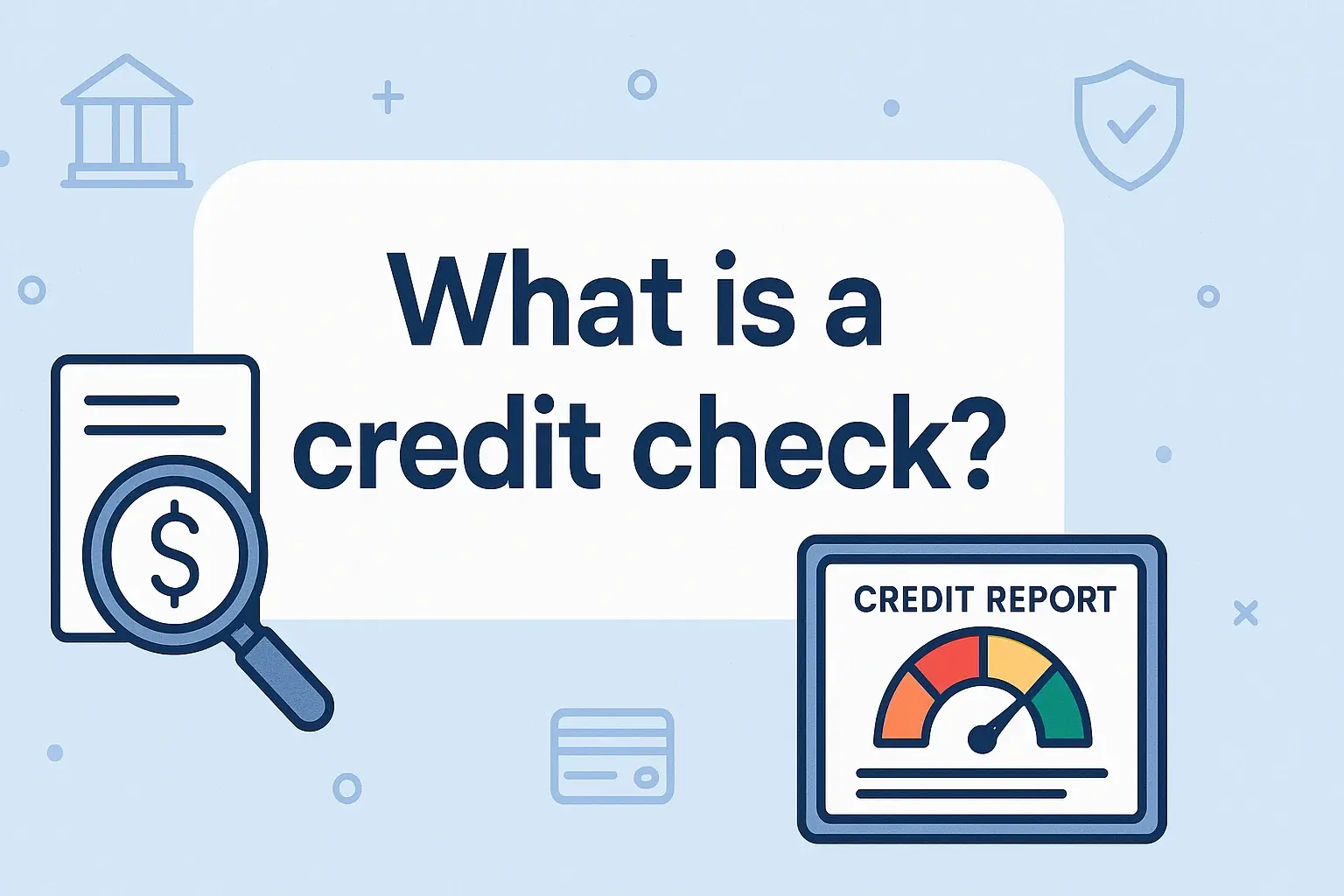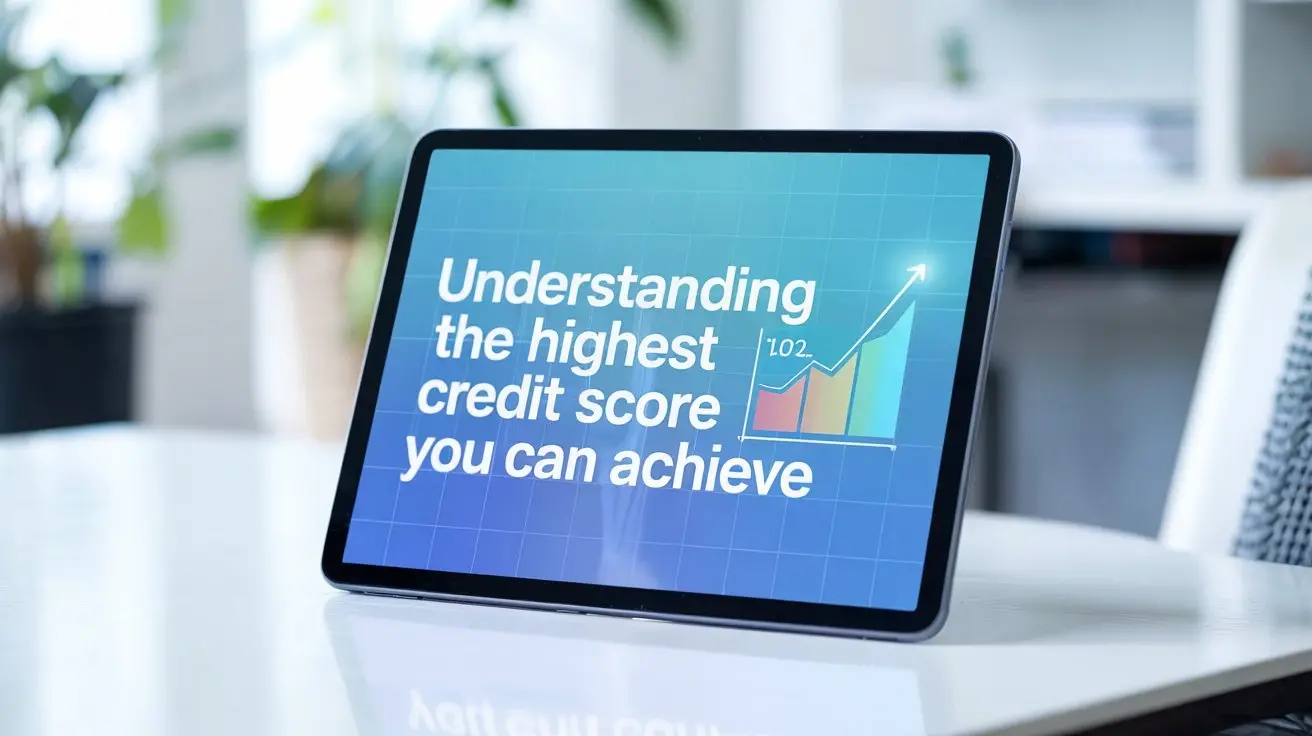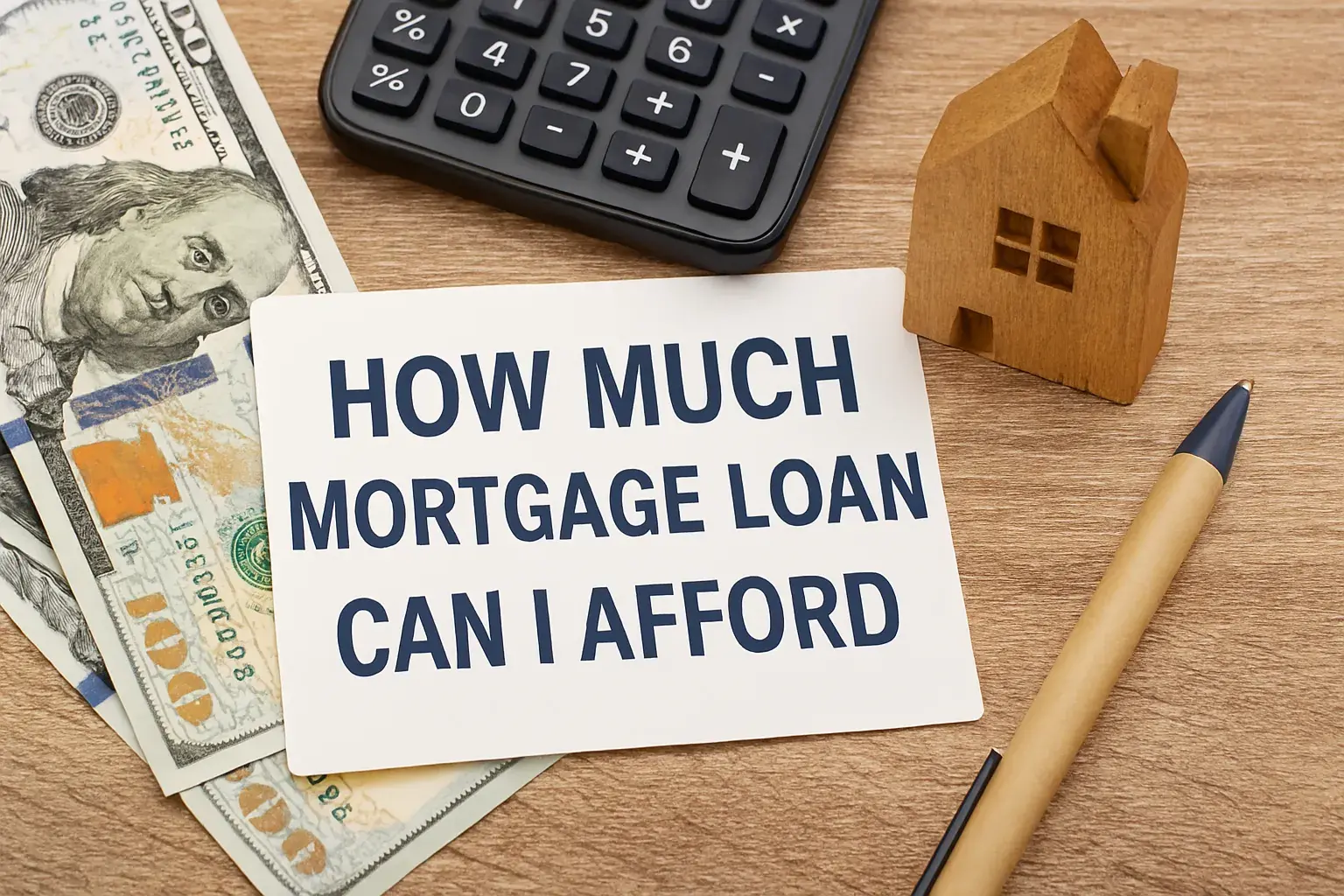-
Posted on: 25 Dec 2023

-
A credit score of 646 sits in a crucial range, often considered "fair" or "average." While not excellent, it's a solid foundation that can be improved to unlock better financial opportunities. This guide will break down what a 646 score means and how to leverage it effectively.
Understanding Credit Scores: The Foundation of Your Financial Health
In the complex world of personal finance, your credit score acts as a vital report card, summarizing your creditworthiness to lenders, landlords, and even potential employers. It's a three-digit number that encapsulates your history of borrowing and repaying money. This score is not static; it fluctuates based on your financial behaviors and is meticulously calculated by credit bureaus using sophisticated algorithms. Understanding how these scores are generated and what they represent is the first crucial step in managing your financial future effectively. Without a solid grasp of this fundamental concept, navigating the landscape of loans, credit cards, and other financial products becomes significantly more challenging.
The most widely used credit scoring models in the United States are FICO and VantageScore. While they have slightly different methodologies, they generally aim to predict the likelihood of a borrower defaulting on their debts. Lenders use these scores to assess risk. A higher score indicates a lower risk, making you a more attractive borrower. Conversely, a lower score signals a higher risk, which can lead to loan denials or significantly higher interest rates. Therefore, cultivating and maintaining a healthy credit score is paramount for accessing favorable financial terms and achieving your financial goals, whether that's buying a home, purchasing a car, or simply having access to emergency funds.
The components that contribute to your credit score are diverse, but they all revolve around your credit behavior. These typically include payment history, amounts owed (credit utilization), length of credit history, credit mix, and new credit. Each of these factors plays a distinct role in shaping your overall score. For instance, consistently paying bills on time is the single most influential factor. Missing payments, even by a few days, can have a detrimental effect. Similarly, how much credit you're using relative to your available credit limit (credit utilization) is a significant determinant. Keeping this ratio low demonstrates responsible credit management.
In 2025, the importance of a strong credit score continues to be amplified. As the financial landscape evolves, so do the expectations of lenders. Understanding the nuances of your credit report and score is no longer just a good practice; it's a necessity for financial well-being. This foundational knowledge empowers you to make informed decisions, avoid costly mistakes, and build a robust financial future. Whether you're aiming to secure a mortgage, lease a new car, or even rent an apartment, your credit score will likely be a key factor in the decision-making process.
What Exactly is a 646 Credit Score?
A credit score of 646 falls into the "fair" or "average" credit range, depending on the specific scoring model used. This means that while you are not considered a high-risk borrower, you are also not in the prime category that attracts the most favorable terms. Lenders will likely view a 646 score with caution, as it suggests a history that may include some past credit challenges, such as late payments, high credit utilization, or a limited credit history. It's a score that indicates you've managed credit, but perhaps not always perfectly.
To put it into perspective, consider the typical FICO score ranges. While these can vary slightly, a common breakdown is as follows:
- Exceptional: 800-850
- Very Good: 740-799
- Good: 670-739
- Fair: 580-669
- Poor: 300-579
The implications of having a 646 score are varied. For some financial products, it might be sufficient to get approved, albeit with higher interest rates than someone with a higher score. For others, particularly those seeking the most competitive loan terms or premium credit cards, it might be a barrier to entry. It's crucial to understand that a 646 score is not a dead end. It signifies a need for strategic financial management and a focused effort to improve your credit habits. The good news is that it's a score that can be significantly improved with consistent, positive financial actions.
Understanding what a 646 credit score means in practical terms is essential. It suggests that while you have demonstrated some ability to manage credit, there are likely areas in your credit report that are negatively impacting your score. These could include a few late payments, a high balance on a credit card, or perhaps a lack of diverse credit accounts. Identifying these specific issues is the first step toward creating a plan to improve your score. It’s a score that tells a story, and by understanding that story, you can begin to rewrite it in a more favorable light.
Credit Score Ranges and What They Mean in 2025
In 2025, the landscape of credit scoring remains largely consistent with previous years, emphasizing the fundamental importance of responsible credit management. The FICO and VantageScore models continue to be the industry standards, with their respective score ranges offering a general guide to lenders when assessing risk. Understanding these ranges is crucial for anyone looking to gauge their financial standing and plan for future borrowing needs.
Here's a breakdown of common credit score ranges and their implications in 2025, using the FICO scoring model as a primary reference, as it's widely used by lenders:
Credit Score Range Category General Implications in 2025 800-850 Exceptional Best interest rates, premium credit cards, highest approval odds. Minimal to no risk perceived by lenders. 740-799 Very Good Excellent interest rates, wide range of credit products, high approval odds. Low risk for lenders. 670-739 Good Good interest rates, access to most credit products, good approval odds. Moderate risk, generally favorable. 580-669 Fair Higher interest rates, limited credit product options, moderate to high approval odds. Noticeable risk for lenders. 300-579 Poor Very high interest rates, limited credit options (often secured or subprime), low approval odds. High risk for lenders. A credit score of 646, as previously discussed, typically falls into the "Fair" category. This means that while you are not in the subprime or "poor" credit bracket, you are also not in the "good" or "very good" categories that unlock the most competitive financial offers. For someone with a 646 score in 2025, this translates to:
- Loan Approvals: You are likely to be approved for many types of loans, such as personal loans, auto loans, and potentially even mortgages, but often with higher interest rates.
- Interest Rates: Expect to pay more in interest over the life of a loan compared to someone with a higher credit score. This is the primary way lenders compensate for the increased risk associated with a fair credit score.
- Credit Card Offers: You may qualify for some credit cards, but they are likely to be basic cards with lower credit limits and potentially higher APRs. Premium rewards cards or those with 0% introductory APR offers will be harder to obtain.
- Rental Applications: Landlords often use credit scores to assess tenant reliability. A 646 score might be acceptable for some rentals, but could lead to rejections from others or require a larger security deposit.
- Insurance Premiums: In many states, insurance companies use credit-based insurance scores to determine premiums. A fair credit score could lead to higher car or homeowner's insurance rates.
It's important to note that these ranges are general guidelines. Individual lenders may have their own specific criteria. Some lenders specialize in working with borrowers in the "fair" credit range, offering products tailored to their needs, albeit at a higher cost. Conversely, prime lenders who cater to borrowers with excellent credit will likely have higher minimum score requirements.
The key takeaway for a 646 score in 2025 is that it represents a significant opportunity for improvement. By understanding where you stand within these ranges and the implications associated with them, you can begin to implement targeted strategies to elevate your score. The financial benefits of moving from a "fair" to a "good" or "very good" score are substantial, saving you money on interest and opening doors to a wider array of financial products and services. The journey to a better credit score is achievable with consistent effort and smart financial habits.
Is a 646 Credit Score Good Enough for Loans?
The question of whether a 646 credit score is "good enough" for loans is nuanced and depends heavily on the type of loan you're seeking and the specific lender's policies. In 2025, a 646 score is generally considered to be in the "fair" credit range. This means that while it's not ideal, it's often sufficient for obtaining certain types of credit, but typically not with the most favorable terms.
Let's break down how a 646 credit score might fare for different loan categories:
Mortgages
For a conventional mortgage, a 646 score is on the lower end of what lenders prefer. While some lenders might approve a mortgage with a score in this range, you can expect a significantly higher interest rate and potentially a larger down payment requirement. The FHA (Federal Housing Administration) loans are often more accessible for borrowers with lower credit scores. FHA guidelines generally allow for scores as low as 580 with a 3.5% down payment, making a 646 score potentially eligible for an FHA-insured mortgage. However, even with FHA loans, a higher score will still result in better terms.
Auto Loans
Securing an auto loan with a 646 credit score is generally possible. Many auto lenders have subprime divisions that cater to borrowers with fair credit. However, the interest rates offered will likely be considerably higher than those for borrowers with good or excellent credit. This means your monthly car payments could be significantly higher, and you'll pay more in interest over the life of the loan. It's advisable to shop around with multiple lenders, including credit unions and online lenders, to find the best possible rate for your score.
Personal Loans
Personal loans are often more flexible in terms of credit score requirements. With a 646 score, you can likely qualify for a personal loan, but again, the interest rates will be elevated. Lenders offering personal loans to individuals with fair credit often charge higher APRs to offset the increased risk. Some lenders may also impose stricter repayment terms or require a co-signer. It's crucial to compare offers carefully, as the difference in interest rates can be substantial.
Student Loans
Federal student loans, particularly those for undergraduate studies, do not typically require a credit check, making them accessible regardless of credit score. However, private student loans do involve credit checks. A 646 score might make it challenging to qualify for private student loans with favorable terms. You may need a co-signer with good credit to secure approval and a reasonable interest rate.
Credit Cards
Obtaining a standard credit card with a 646 score is often achievable, but you're unlikely to qualify for premium rewards cards or those with the best introductory offers. You'll likely be approved for a basic credit card, potentially a secured credit card (which requires a cash deposit as collateral), or a card designed for building credit. These cards often come with higher interest rates and lower credit limits. However, responsible use of such a card can be a valuable tool for improving your credit score over time.
Key Considerations for a 646 Score and Loans:
- Interest Rates: This is the most significant impact. Expect higher APRs across the board, which increases the total cost of borrowing.
- Loan Terms: Lenders might offer shorter repayment periods or require larger down payments to mitigate their risk.
- Approval Odds: While approval is often possible, it's not guaranteed. Lenders have varying risk appetites.
- Shopping Around: It's more critical than ever to compare offers from multiple lenders. Even a small difference in interest rates can save you hundreds or thousands of dollars.
- Secured Options: Consider secured loans or credit cards, which require collateral or a deposit, as they are generally easier to obtain with a fair credit score.
In summary, a 646 credit score is not ideal for securing the best loan terms, but it is often good enough to gain access to credit. The primary challenge lies in the cost of borrowing, which will be higher due to elevated interest rates. The focus for individuals with this score should be on qualifying for necessary credit while simultaneously working to improve their score to unlock better financial opportunities in the future. For specific needs like a mortgage, exploring government-backed programs like FHA loans might be a more viable path.
The Impact of a 646 Score on Interest Rates
The most profound and immediate impact of a 646 credit score is on the interest rates you will be offered for loans and credit cards. In the world of lending, your credit score is a primary indicator of risk. A higher score signifies a lower risk to the lender, who is then willing to offer you more favorable terms, including lower interest rates. Conversely, a score of 646, which falls into the "fair" credit category, signals a moderate to higher level of risk, prompting lenders to charge more to compensate for that perceived risk.
Let's illustrate this with hypothetical examples for 2025, recognizing that actual rates can fluctuate based on market conditions, lender policies, and individual loan characteristics:
Auto Loans
Consider a $30,000 auto loan over 60 months.
- Borrower with Excellent Credit (740+): Might receive an APR of 5.0%. Monthly payment: ~$566. Total interest paid: ~$3,960.
- Borrower with Good Credit (670-739): Might receive an APR of 7.5%. Monthly payment: ~$595. Total interest paid: ~$5,700.
- Borrower with Fair Credit (646): Might receive an APR of 12.0%. Monthly payment: ~$665. Total interest paid: ~$9,900.
Personal Loans
Imagine a $10,000 personal loan over 36 months.
- Borrower with Excellent Credit (740+): Might receive an APR of 8.0%. Monthly payment: ~$313. Total interest paid: ~$1,268.
- Borrower with Fair Credit (646): Might receive an APR of 20.0%. Monthly payment: ~$372. Total interest paid: ~$3,392.
Mortgages
For a $300,000 mortgage over 30 years, the difference in interest rates can be staggering.
- Borrower with Excellent Credit (740+): Might receive an APR of 6.0%. Monthly Principal & Interest (P&I): ~$1,799. Total interest paid: ~$347,640.
- Borrower with Fair Credit (646): Might receive an APR of 8.0% (this is a conservative estimate; it could be higher depending on lender and loan type). Monthly P&I: ~$2,201. Total interest paid: ~$492,560.
Credit Cards
While credit card interest rates (APRs) are often higher across the board, a 646 score will typically lock you into a significantly higher APR than someone with good credit. For example, a card that might offer 18% APR to someone with good credit could charge 25% or even 30% APR to someone with a 646 score, especially if it's a card designed for those with less-than-perfect credit.
Why the Higher Rates?
- Risk Premium: Lenders see a 646 score as an indicator of past financial difficulties, increasing the probability of default. The higher interest rate acts as a premium to cover potential losses.
- Limited Options: With a fair credit score, your choices for lenders and financial products are often limited to those who specialize in higher-risk borrowers, and these lenders inherently charge more.
- Profitability: Lenders are businesses aiming to make a profit. They can charge more to borrowers who represent a higher risk, ensuring their profitability.
The cumulative effect of these higher interest rates can be substantial. Over time, the extra interest paid can significantly increase the total cost of any debt you carry. Therefore, for individuals with a 646 credit score, the most impactful financial strategy is often to focus on improving that score. Even a modest increase in your credit score can lead to significant savings on interest payments, freeing up more of your income for savings, investments, or other financial goals. The effort invested in credit repair can yield considerable financial returns.
Strategies to Improve Your 646 Credit Score
A credit score of 646 is a solid starting point, but there's significant room for improvement. The good news is that with consistent effort and smart financial habits, you can elevate your score and unlock better financial opportunities. The key is to focus on the factors that most heavily influence your credit score: payment history, credit utilization, and the length of your credit history. Here are actionable strategies to improve your 646 credit score in 2025:
1. Prioritize On-Time Payments
Why it matters: Payment history is the single most significant factor influencing your credit score, accounting for about 35% of your FICO score. Even a single missed payment can significantly damage your score.
Actionable steps:
- Set up automatic payments: Ensure you never miss a due date by automating payments for all your credit accounts and loans.
- Use payment reminders: If automatic payments aren't feasible, set calendar alerts or reminders a few days before your due dates.
- Pay at least the minimum: If you're ever short on funds, always pay at least the minimum amount due to avoid a late payment mark. You can pay the rest later.
- Catch up on past-due accounts: If you have any accounts that are currently past due, bring them current as soon as possible.
2. Reduce Your Credit Utilization Ratio (CUR)
Why it matters: Amounts owed, particularly your credit utilization ratio (the amount of credit you're using compared to your total available credit), accounts for about 30% of your FICO score. Keeping this ratio low is crucial.
Actionable steps:
- Pay down credit card balances: Focus on paying down balances on your credit cards, especially those with high utilization. Aim to keep your CUR below 30%, and ideally below 10%.
- Request a credit limit increase: If you have a good payment history with a particular card issuer, you might be able to request a credit limit increase. This can lower your CUR without you spending more, provided you don't increase your spending.
- Avoid maxing out cards: Never carry balances close to your credit limit.
- Spread out your spending: If you have multiple credit cards, try to distribute your spending across them rather than concentrating it on one card.
3. Avoid Opening Too Many New Accounts Quickly
Why it matters: New credit inquiries account for about 10% of your FICO score. While opening new accounts is sometimes necessary, doing so too frequently can signal increased risk to lenders.
Actionable steps:
- Apply for credit only when necessary: Be strategic about when you apply for new credit.
- Space out applications: If you need to open multiple accounts, space out your applications over several months or even a year.
- Understand hard vs. soft inquiries: A "hard inquiry" occurs when you apply for credit and can slightly lower your score. A "soft inquiry" (like checking your own credit score) does not affect your score.
4. Keep Old, Unused Accounts Open
Why it matters: The length of your credit history (about 15% of your FICO score) and the average age of your accounts are important. Older accounts generally contribute positively to your score.
Actionable steps:
- Don't close old credit cards: Even if you don't use an old credit card often, keeping it open (especially if it has a zero balance) can help maintain a longer average account age and a lower credit utilization ratio.
- Use them occasionally: To prevent issuers from closing inactive accounts, make a small purchase on them every few months and pay it off immediately.
5. Diversify Your Credit Mix
Why it matters: Having a mix of different types of credit (e.g., credit cards, installment loans like auto or mortgage loans) can positively impact your score (about 10% of your FICO score), as it shows you can manage various forms of credit responsibly.
Actionable steps:
- Don't open accounts solely for mix: This is a less impactful factor, so don't open new accounts you don't need just to diversify.
- Focus on other factors first: Prioritize on-time payments and low utilization, as these have a much greater impact.
6. Monitor Your Credit Reports Regularly
Why it matters: Errors on your credit report can negatively impact your score. Regularly checking your reports helps you identify and dispute inaccuracies.
Actionable steps:
- Get free copies: You are entitled to a free copy of your credit report from each of the three major credit bureaus (Equifax, Experian, and TransUnion) every 12 months at AnnualCreditReport.com.
- Review for errors: Look for any accounts you don't recognize, incorrect personal information, or incorrect payment statuses.
- Dispute inaccuracies: If you find errors, dispute them with the credit bureau and the creditor that reported the information.
7. Consider a Secured Credit Card or Credit-Builder Loan
Why it matters: If your credit history is limited or contains significant negative marks, these tools can help build positive credit history.
Actionable steps:
- Secured Credit Card: Requires a cash deposit that usually equals your credit limit. Use it responsibly for everyday purchases and pay it off in full each month.
- Credit-Builder Loan: The loan amount is held in an account while you make payments. Once paid off, you receive the funds, and the payment history is reported to credit bureaus.
Improving a 646 credit score is a marathon, not a sprint. It requires patience and consistency. By focusing on these strategies, you can steadily build a stronger credit profile, leading to better interest rates, increased access to credit, and ultimately, greater financial freedom. Remember that every positive action you take on your credit accounts contributes to a higher score over time.
Exploring Alternative Lending Options with a 646 Score
For individuals with a 646 credit score, traditional lending avenues can be challenging, often resulting in higher interest rates or outright denials. Fortunately, the financial landscape in 2025 offers a growing number of alternative lending options that can be more accessible. These options may not always offer the best terms compared to prime borrowers, but they provide crucial pathways for obtaining credit when traditional routes are difficult.
1. Credit Unions
Credit unions are member-owned financial cooperatives that often have more flexible lending criteria than large banks. They prioritize member needs over profit, which can translate into better rates and terms for those with fair credit. Many credit unions offer personal loans, auto loans, and even mortgages with competitive rates for members who might not qualify elsewhere. Becoming a member is usually straightforward and often requires a small deposit.
2. Online Lenders and Fintech Companies
The rise of financial technology (fintech) has led to a proliferation of online lenders. These companies often use sophisticated algorithms that can assess creditworthiness beyond just traditional credit scores. They may consider alternative data points, such as rent payment history or utility bills, to make lending decisions. While some online lenders cater to prime borrowers, many specialize in serving individuals with fair or even poor credit. It's essential to research and compare rates from reputable online lenders, as APRs can vary widely.
3. Peer-to-Peer (P2P) Lending Platforms
Platforms like LendingClub and Prosper connect borrowers directly with individual investors. These platforms often have tiered lending programs where borrowers with fair credit can still find investors willing to fund their loans. The interest rates are determined by the perceived risk, so a 646 score will likely result in a higher APR, but it can still be a viable option for obtaining personal loans.
4. Secured Loans
Secured loans require collateral, such as a savings account, certificate of deposit (CD), or other assets. Because the lender has collateral to fall back on if you default, they are less concerned about your credit score. A 646 score can make it easier to qualify for a secured loan, and the interest rates are typically lower than for unsecured loans. Examples include:
- Secured Personal Loans: Backed by savings or CDs.
- Home Equity Loans/Lines of Credit (HELOCs): If you own a home with equity, these can be an option, though approval still depends on lender guidelines and your overall financial picture.
- Auto Title Loans: These are high-risk, short-term loans where you use your car title as collateral. They often come with extremely high interest rates and should be avoided if at all possible.
5. Co-signed Loans
If you have a trusted friend or family member with good credit, they can co-sign a loan for you. A co-signer agrees to be legally responsible for the debt if you are unable to pay. This significantly reduces the lender's risk and can help you qualify for a loan or secure a lower interest rate. However, it's crucial for the co-signer to understand the risks involved, as their credit score will also be affected if payments are missed.
6. Buy Now, Pay Later (BNPL) Services
Services like Klarna, Afterpay, and Affirm allow consumers to split purchases into smaller, interest-free installments. While these are not traditional loans, they can be a useful tool for managing larger purchases. Some BNPL providers perform soft credit checks or no credit checks at all, making them accessible to individuals with a 646 score. However, it's important to use them responsibly and ensure you can make the installment payments to avoid late fees or negative reporting.
7. Rent-to-Own Programs
For larger purchases like appliances or furniture, rent-to-own programs can be an alternative to traditional financing. While the overall cost is typically higher than buying outright or financing with good credit, these programs often don't require a credit check, making them accessible to those with fair credit.
Important Considerations:
- Read the Fine Print: Always thoroughly read the terms and conditions, especially regarding interest rates, fees, and repayment schedules.
- Compare Offers: Even within alternative lending, rates and terms can vary significantly. Shop around to find the best deal.
- Understand the Risks: Some alternative options, like auto title loans, carry extremely high risks and should be approached with extreme caution.
- Focus on Improvement: While these options can provide immediate solutions, the long-term goal should still be to improve your credit score to access more favorable traditional lending products.
By exploring these alternative lending avenues, individuals with a 646 credit score can find ways to meet their financial needs while continuing to work towards building a stronger credit profile for the future. The key is to be informed, diligent in your research, and mindful of the terms and conditions associated with each option.
Long-Term Financial Planning with a 646 Score
Having a credit score of 646 presents a unique opportunity for strategic long-term financial planning. While it's not a score that unlocks the most advantageous financial products immediately, it serves as a powerful motivator to build a more robust financial future. The goal is not just to manage your current financial situation but to systematically improve your creditworthiness over time, leading to significant long-term benefits.
1. Setting Credit Improvement Goals
The first step in long-term planning is to set clear, achievable goals for your credit score. For instance, a goal might be to increase your score from 646 to 700 within 18-24 months. This involves understanding the timeline for credit score improvement. Positive actions take time to reflect on your report, and negative marks can linger for years. Therefore, patience and consistency are key. Breaking down the larger goal into smaller, monthly objectives, such as reducing credit utilization by a certain percentage or ensuring all payments are on time for six consecutive months, can make the process more manageable.
2. Budgeting for Debt Reduction
A significant portion of your credit score is tied to amounts owed. Long-term financial planning with a 646 score must include a robust debt reduction strategy, particularly for high-interest credit card debt. This involves creating a detailed budget that prioritizes paying down balances aggressively. Consider using methods like the debt snowball or debt avalanche approach. The debt avalanche method, which prioritizes paying off debts with the highest interest rates first, can save you more money in the long run and significantly improve your credit utilization ratio, a key component of your score.
3. Strategic Use of Credit for Building History
Once you've addressed any immediate issues like high balances or late payments, strategic use of credit becomes crucial for long-term growth. This might involve obtaining a secured credit card or a credit-builder loan. The objective is to demonstrate a consistent history of responsible borrowing and repayment. By making small, manageable purchases on these accounts and paying them off in full and on time each month, you build a positive credit history that will gradually increase your score over time. This consistent positive activity is vital for long-term financial health.
4. Planning for Major Purchases
Long-term financial planning also involves anticipating future needs, such as buying a home, purchasing a new car, or funding higher education. With a 646 score, these major purchases will likely come with higher costs due to elevated interest rates. Therefore, a key part of your plan should be to continue improving your credit score well in advance of these anticipated purchases. The difference in monthly payments and total interest paid over the life of a mortgage or car loan can amount to tens or even hundreds of thousands of dollars. Aiming for a score in the "good" or "very good" range (670+) before applying for these significant loans can yield substantial savings.
5. Building an Emergency Fund
A strong credit score is important, but it's not the only pillar of financial security. Long-term financial planning must also include building an emergency fund. Unexpected expenses, like job loss or medical emergencies, can derail even the best-laid financial plans and can lead to reliance on high-interest debt if an emergency fund is not in place. Having 3-6 months of living expenses saved can prevent you from needing to take on new debt when unexpected events occur, thereby protecting your credit score and overall financial stability.
6. Understanding Credit Report Dynamics
Long-term financial planning requires an ongoing understanding of how your credit report influences your score. Regularly monitoring your credit reports from Equifax, Experian, and TransUnion is essential. This allows you to track your progress, identify any new issues, and dispute any inaccuracies that could be hindering your score. Knowledge of how different factors impact your score—payment history, credit utilization, length of credit history, credit mix, and new credit—empowers you to make informed decisions that align with your long-term goals.
7. Seeking Professional Advice
For some, navigating the complexities of credit and long-term financial planning can be daunting. Seeking advice from a reputable non-profit credit counseling agency or a fee-only financial advisor can provide personalized strategies and guidance. These professionals can help you create a comprehensive financial plan tailored to your specific situation and goals, ensuring you are on the most effective path to improving your credit and achieving long-term financial security.
In essence, a 646 credit score is not a permanent financial state but a stepping stone. By integrating credit improvement into your broader financial planning, focusing on debt reduction, responsible credit use, and consistent monitoring, you can transform your financial trajectory. The long-term rewards of a higher credit score—lower borrowing costs, greater access to financial products, and increased financial peace of mind—are well worth the effort.
Conclusion: Your Path Forward with a 646 Credit Score
A credit score of 646 signifies a "fair" or "average" credit standing in 2025. While it's not the prime score that unlocks the most competitive interest rates and exclusive financial products, it is a score that indicates you have some experience with credit and are not considered a high-risk borrower. This score is a crucial junction, offering both challenges and significant opportunities for improvement.
The primary implications of a 646 score revolve around higher interest rates on loans and credit cards, potentially limited access to premium credit products, and a need for careful shopping when seeking financing. However, it is absolutely possible to secure loans and credit cards with this score, especially through credit unions, online lenders, or by considering options like secured credit cards or co-signed loans. The key is to be informed about the increased costs associated with borrowing at this credit level.
The most impactful strategy for anyone with a 646 credit score is to focus on consistent, positive actions that will elevate their score. Prioritizing on-time payments, diligently reducing credit card balances to lower utilization ratios, and maintaining older, established credit accounts are foundational steps. By implementing these strategies, you can gradually build a stronger credit profile. This journey requires patience and discipline, as credit score improvement is a marathon, not a sprint.
Looking ahead, a 646 score should be viewed as a catalyst for long-term financial planning. By setting clear credit improvement goals, budgeting for debt reduction, and strategically using credit to build a positive history, you pave the way for significant financial advantages in the future. The savings achieved through a higher credit score on major purchases like homes and cars can be substantial, impacting your overall financial well-being for years to come. Remember to also build an emergency fund to protect your progress from unexpected life events.
In conclusion, a 646 credit score is a solid foundation upon which to build a more prosperous financial future. It's a score that says you can manage credit, but with room to grow. By understanding its implications, actively working to improve it, and integrating credit health into your broader financial planning, you can unlock better opportunities, save money on borrowing, and achieve your financial aspirations. Your path forward with a 646 credit score is one of informed action and strategic improvement.











